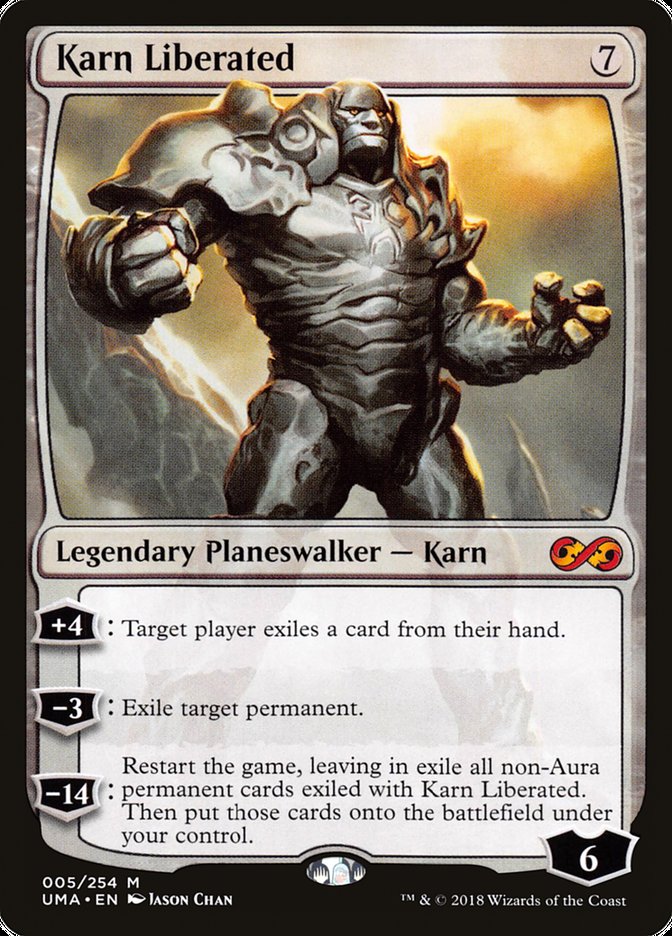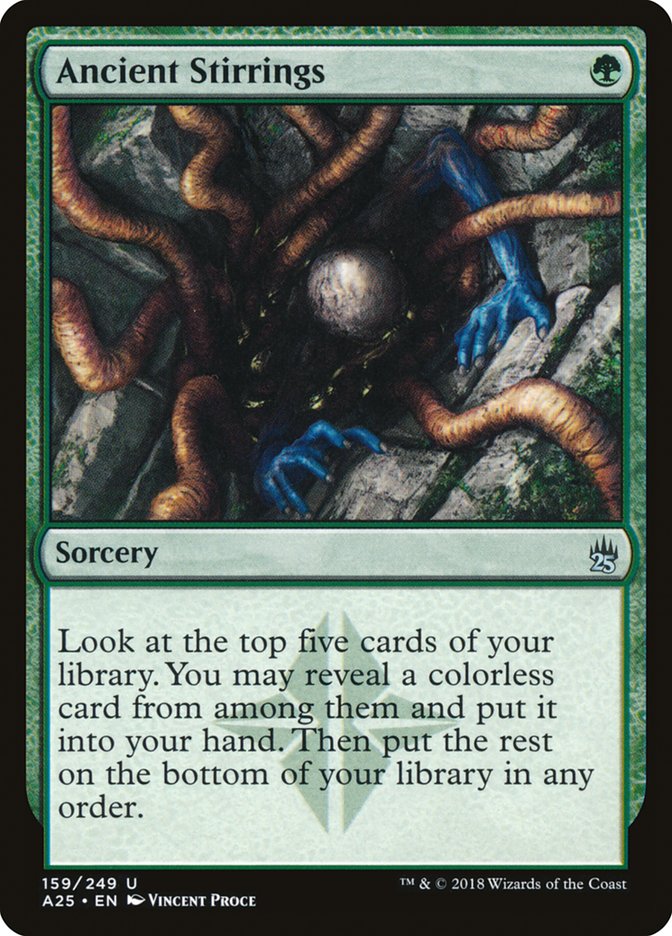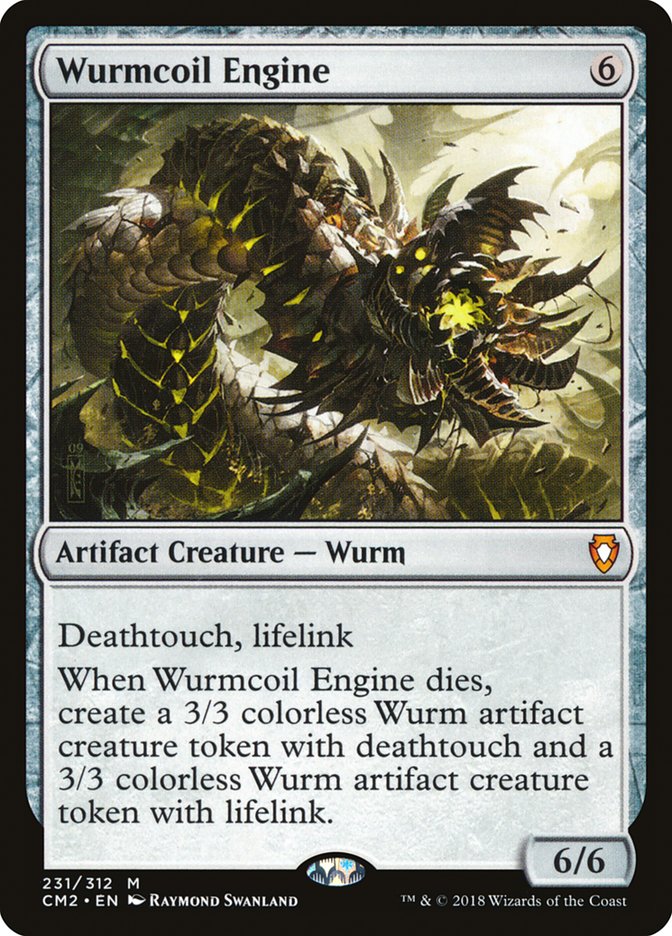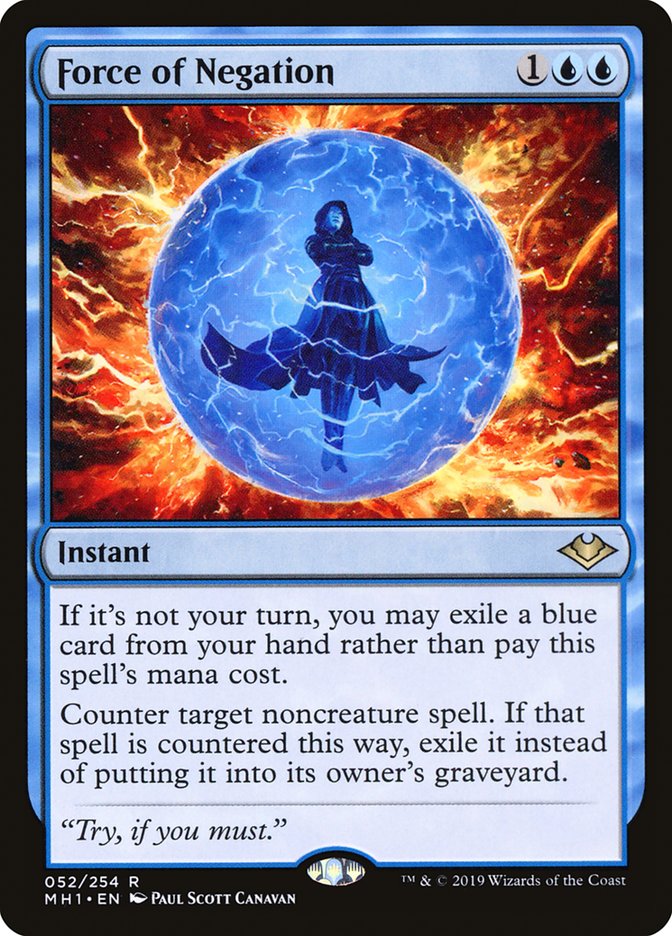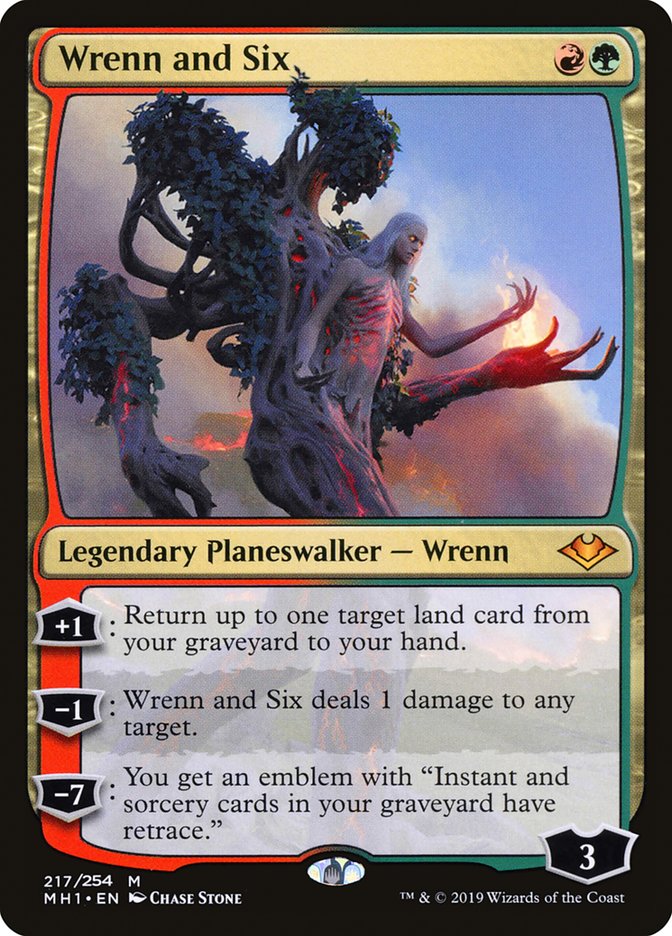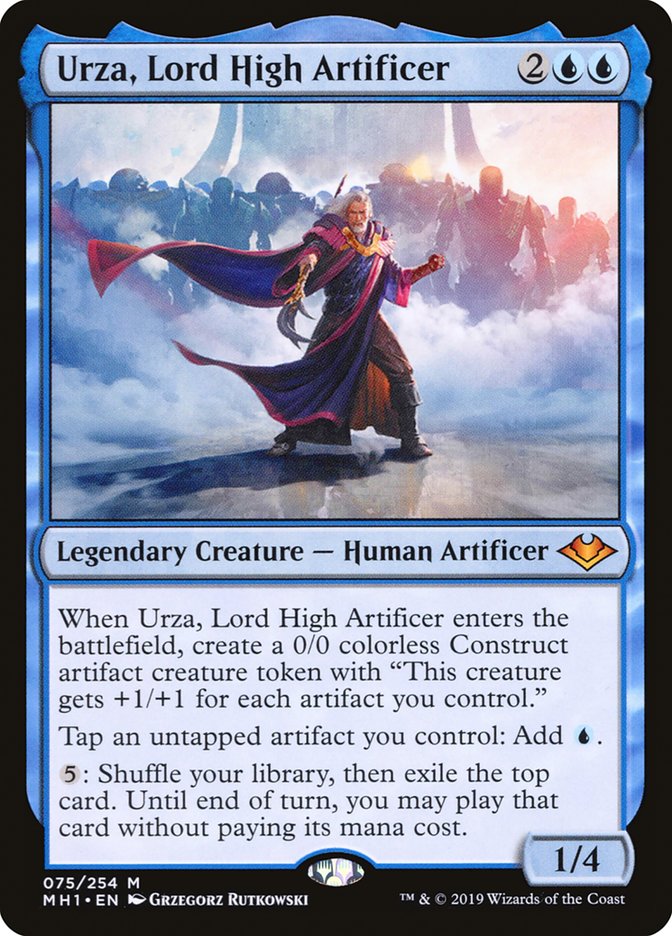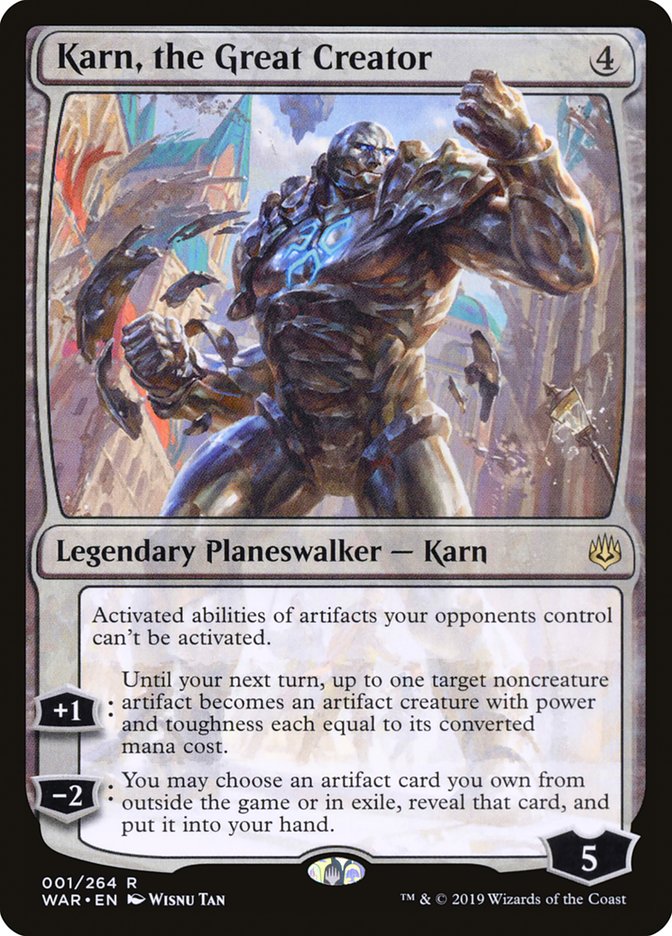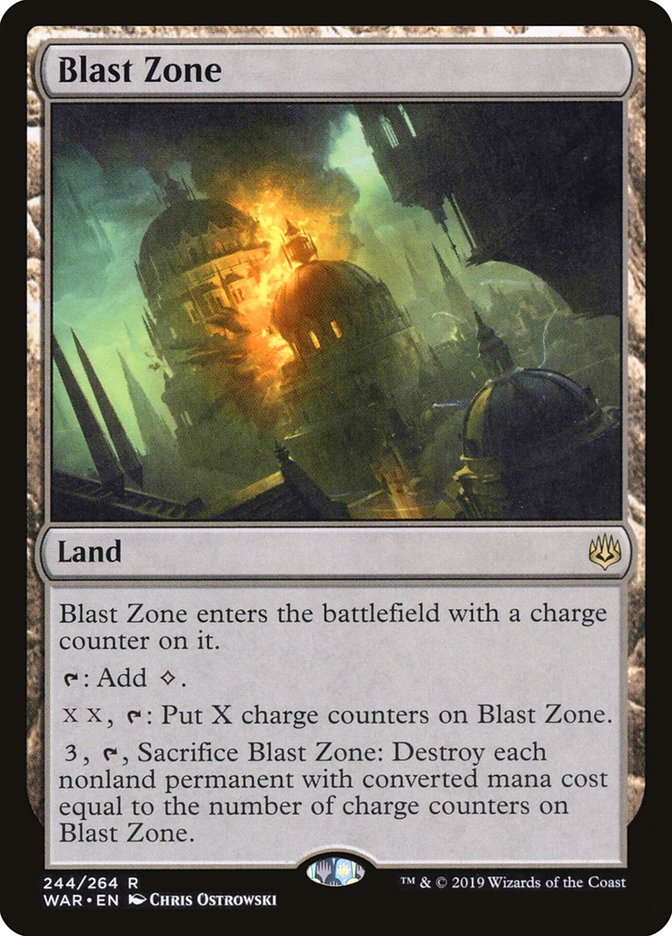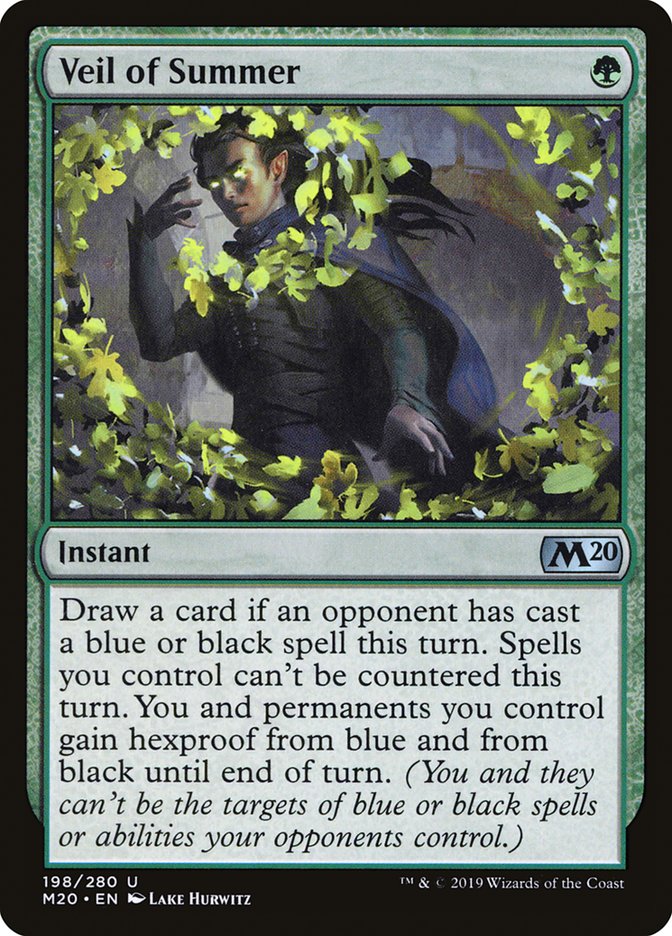Last weekend, Karn Liberated reasserted its dominance over Modern, giving Thoralf Severin a Mythic Championship title in Barcelona and me my third Open win of the year in Columbus. Mono-Green Tron winning a tournament isn’t surprising – every few months you hear a chorus of groans as Karn reminds us all just what it can do – but the reaction was. After years in which Mono-Green Tron was Public Enemy No. 1 and Twitter was flooded with calls to ban Ancient Stirrings, the viewers seemed almost… happy?! It took Hogaak rising from the dead and taking over the format again for people to realize how tame Mono-Green Tron is by comparison.
Somehow, it didn’t die a villain; it lived long enough to see itself become the hero.
In a format that has seen repeated and tumultuous upheaval over the years, Mono-Green Tron is the ultimate survivor. It first seized the spotlight when US National champion Charles Gindy won his way back to the Pro Tour in 2012 with this early list:
Creatures (2)
Planeswalkers (4)
Lands (18)
Spells (36)
- 4 Mindslaver
- 4 Talisman of Impulse
- 4 Sylvan Scrying
- 4 Chromatic Sphere
- 4 Chromatic Star
- 4 Expedition Map
- 3 Explore
- 1 All Is Dust
- 4 Ancient Stirrings
- 4 Prophetic Prism
Sideboard

The deck was quickly refined as players cut the clunky two-mana cards and found the right rewards for their abundant mana. As the format churned with new releases and bans (including some collateral damage to the deck from the Eye of Ugin ban), Tron remained a constant presence. It wasn’t always the best deck in the abstract or the best deck for a weekend, but it rode the wave of the Modern metagame better than anything else. Players who bought their Karns way back when can still be pleased in that investment.
Whenever a deck is seen as the best choice by a wide margin, it becomes a litmus test for the format: it doesn’t matter much how good your other matchups are if that one is bad. With the release of Modern Horizons, that deck was Hogaak; after the ban of Bridge from Below, that deck… is still Hogaak.
The matchup is still close – I’d rather be on the play than choose my side of the matchup – and the adoption of maindeck Assassin’s Trophy is a worrying development. Between the trifecta of Assassin’s Trophy, Force of Vigor, and Nature’s Claim, keeping a Leyline on the battlefield is not a safe bet; even if you do, Satyr Wayfinder makes it easier to hardcast Vengevine and punish a slower hand that relied on Leyline to buy time.
I often found myself wishing I had a Bojuka Bog or Scavenger Grounds to find with Expedition Map and Sylvan Scrying. Tormod’s Crypt and Grafdigger’s Cage can also be found with Stirrings and don’t use up your land drop for the turn. Ravenous Trap and Surgical Extraction aren’t vulnerable to these countermeasures and can catch the opponent off-guard. Some mix of these cards may be a better way to fight Hogaak for the rest of its short time in Modern.
Aside from that, the picture looks rosy for Mono-Green Tron. While unleashing the Hogaak menace on the format, Modern Horizons also reinvigorated the “fair” pillars of Modern, with Force of Negation allowing Azorius Control to tap out against unfair decks with impunity and Wrenn and Six giving Jund a sturdy and steady source of card advantage. This makes Jund better overall but weaker against Mono-Green Tron, where Dark Confidant at least offered minor pressure and more looks at relevant interaction. Azorius Control was a solid matchup that became much closer with the addition of Field of Ruin and Force of Negation is an extra wrinkle; however, the threat of Hogaak has forced decks to embrace hard hate like Rest in Peace at the cost of Surgical Extraction, which threatened to combine with Field of Ruin (or Assassin’s Trophy and Fulminator Mage out of Jund) to shut down your mana engine.
More generally, Hogaak is warping the format enough that sideboards are built with it as the primary target and there’s no overlap between the cards that beat Hogaak and cards that help against Mono-Green Tron. It’s easy to imagine a Jund player on the Friday before the tournament making room for that extra graveyard hate card by shaving a Collector Ouphe or Fulminator Mage; Gerry Thompson removed Fulminator Mage from his Mythic Championship list altogether, admitting defeat and aiming to shore up other matchups with those slots.
When Columbus hosted the Pro Tour in 2005, Pierre Canali tore through the tournament with Affinity; Osyp Lebedowicz mentioned from the booth that when his team cut their artifact removal because they didn’t expect Affinity, they should have realized that others would come to the same conclusion and that it might be a great choice after all. It’s a timeless principle of metagaming that’s just as important fifteen years later. In the pre-Open chatter on Twitter and in articles last week I saw a lot of people claiming they had decent matchups across the board … except against Mono-Green Tron, but that’s not popular at the moment, right?
Other trends in the format bode well for Mono-Green Tron. The “big mana” deck of the moment is Eldrazi Tron, which, although different enough in important ways to make the direct comparison misleading, is substantially less powerful than its Mono-Green alternative; you assemble Tron more consistently and have much better things to do with it, only really losing to a Chalice of the Void on the play against a weak hand or a fast Karn, the Great Creator. Eldrazi Tron’s biggest advantage over Mono-Green Tron also improves the latter’s position in the format: cards like Alpine Moon or Damping Sphere that hobble other big mana decks do nothing against Eldrazi Tron and therefore see little play, making Mono-Green Tron that much more tempting.
The unknown quantity of Modern right now is the family of decks centered on Urza, Lord High Artificer and the vast array of tools available to artifact strategies. These are fundamentally weak against the likes of Karn and Oblivion Stone even if they are built with the matchup in mind, and in Columbus and Barcelona, most were not. Meanwhile, Modern mainstays Humans and Izzet Phoenix remain easy pickings for Mono-Green Tron and are distracted fighting each other as well as the undead hordes. Finally, the combo decks on the fringes of the format – Infect, Storm, Devoted Druid, and so on – that posed problems for Mono-Green Tron have been largely crowded out by the resurgence of Jund and other interactive decks. This leaves basic Mountains, whether out of Burn, Mono-Red Phoenix, or Mono-Red Prowess, as Mono-Green Tron’s natural predator.
Format specifics aside, the biggest boon to Mono-Green Tron comes from the London mulligan. Its test run at the previous tabletop Mythic Championship was a crucial factor in Mono-Green Tron’s popularity and success in that tournament, and it only took me a few games in this one to understand why. In addition to serving up more ideal hands featuring full Tron and a payoff card, this change lets you mulligan more aggressively in search of Tron and makes speculative six- or five-card hands even better. This adds an interesting strategic dimension, as those smaller hands now require tough choices.
In a crucial game against Hogaak in the elimination rounds, I had to choose which of Karn Liberated and Relic of Progenitus to keep alongside two Tron pieces and Expedition Map in my four-card hand. With the Vancouver mulligan, I would be forced to keep and hope to draw some perfect sequence of cards to stay in the game. Mono-Green Tron stands to benefit from this new system more than most decks which have less rigorous sequencing requirements and need fewer specific pieces to function at all. The biggest mistake I see Mono-Green Tron pilots make – and the first mistake I was warned about when I said I was considering the deck – is keeping too many seven-card hands that don’t have a clear path to Tron with a payoff as soon as possible. Discipline in mulligans will increase your win rate more than almost anything else here. There’s no excuse now!
Before looking at what’s in these winning lists, let’s take note of what isn’t:
The allure of the younger Karn is that it fixes a long-standing problem of lacking the right type of payoff even when you do have early Tron. The deck occupies a curious position during preview season of new sets, as it only really cares about expensive artifacts and colorless cards. With that in mind, the past few years were surprisingly lucrative – Ugin, the Spirit Dragon; Ulamog, the Ceaseless Hunger; and Walking Ballista are all valuable additions to the arsenal – but these new tools still can’t fit square pegs into round holes.
Karn, the Great Creator offers access to cards too narrow to belong in a maindeck but surgical and powerful enough to shut the door on a given opponent – Ensnaring Bridge against aggressive decks, Trinisphere for Phoenix decks of any stripe, Wurmcoil Engine or Walking Ballista as more threats – as well as Mycosynth Lattice for the inevitable lock. At only four mana, Karn can be cast when assembling Tron is off the table for some reason. If that wasn’t enough, the static ability offers free wins against the mirror, Grixis Urza, and any brave soul who registered Arcbound Ravager.
Unfortunately, this comes at a steep cost. Mono-Green Tron rarely sideboards heavily but enjoys the chance to adapt its suite of threats for the matchup or bring in cheap interaction to keep pace in the early turns. The more options Karn, the Great Creator has, the more it forces tough choices about which regular sideboard cards to cut; all of them did good work on the weekend for me. Mono-Green Tron also does a worse job than Eldrazi Tron of defending Karn on the battlefield, making it harder to assemble the one-card combo with Mycosynth Lattice; Matter Reshaper is an embarrassment, but it can at least make itself useful by jumping in front of an attacker for a turn.
The decision over Karn, the Great Creator necessarily informs other deckbuilding choices. Thoralf Severin and I agree on Karn but differ on some smaller questions.
Creatures (7)
Planeswalkers (6)
Lands (19)
Spells (28)

Creatures (9)
Planeswalkers (6)
Lands (19)
Spells (26)

Some notable differences from previous Mono-Green Tron lists include:
Wurmcoil Engine is the best card you can cast on the third turn against Hogaak, is just as good against Jund as it was seven years ago, and is your best bet of stealing games against Burn, Mono-Red Phoenix, and Mono-Red Prowess, or stabilizing the battlefield against Eldrazi Tron. I knew I wanted to play four and was happy with that choice.
A valuable addition from War of the Spark, Blast Zone gives you a searchable answer to permanent hate other than Blood Moon and makes your midgame topdecks much more live by giving Expedition Map and Sylvan Scrying something to do when you already have Tron. Many of the decks that try to go underneath Mono-Green Tron rely heavily on one-drops and are highly susceptible to stepping on this landmine.
A helpful, if not strictly necessary, pickup for the sideboard, Veil of Summer manages to be good against both types of fair deck: discard-heavy Jund or Death’s Shadow and reactive Izzet Phoenix or Azorius Control. These conditional answers are typically weak against discard as they play into its hands, making your topdecks less consistent. The contrived wording of Veil minimizes this weakness, as it can usually be cashed in for a new card and Jund’s best ways to attack your lands and steal the game, Assassin’s Trophy and Fulminator Mage, are both black.
In the big picture, this is still the same Tron deck that has terrorized Modern for years and has stood the test of time. Whenever Magic players act like they forgot about Tron, Karn will show up to teach them a lesson. Recognizing when class is in session is a great way to take home a trophy.


